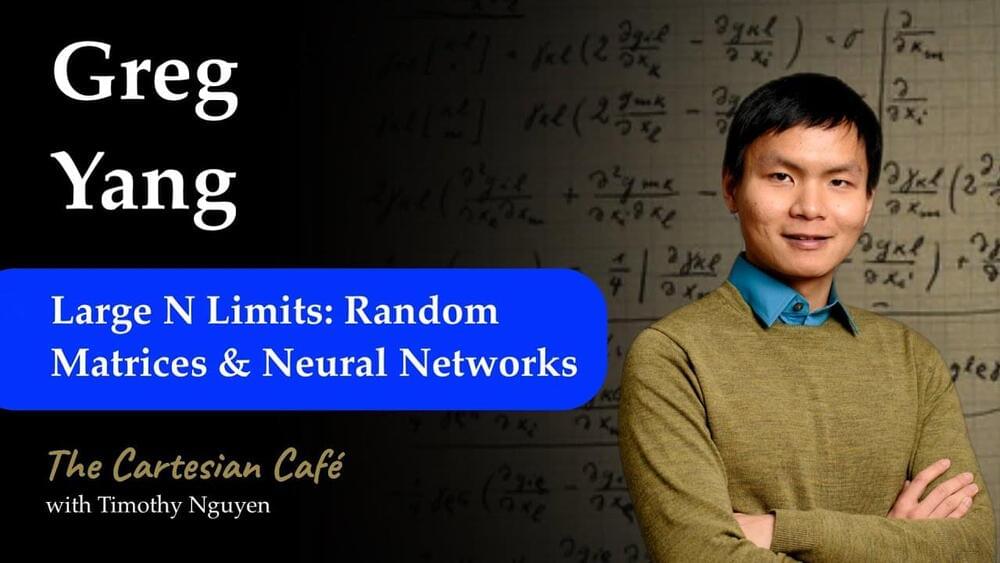Greg Yang is a mathematician and AI researcher at Microsoft Research who for the past several years has done incredibly original theoretical work in the understanding of large artificial neural networks. Greg received his bachelors in mathematics from Harvard University in 2018 and while there won the Hoopes prize for best undergraduate thesis. He also received an Honorable Mention for the Morgan Prize for Outstanding Research in Mathematics by an Undergraduate Student in 2018 and was an invited speaker at the International Congress of Chinese Mathematicians in 2019.
In this episode, we get a sample of Greg’s work, which goes under the name “Tensor Programs” and currently spans five highly technical papers. The route chosen to compress Tensor Programs into the scope of a conversational video is to place its main concepts under the umbrella of one larger, central, and time-tested idea: that of taking a large N limit. This occurs most famously in the Law of Large Numbers and the Central Limit Theorem, which then play a fundamental role in the branch of mathematics known as Random Matrix Theory (RMT). We review this foundational material and then show how Tensor Programs (TP) generalizes this classical work, offering new proofs of RMT. We conclude with the applications of Tensor Programs to a (rare!) rigorous theory of neural networks.
Patreon: https://www.patreon.com/timothynguyen.
Part I. Introduction.
00:00:00 : Biography.
00:02:36 : Harvard hiatus 1: Becoming a DJ
00:07:40 : I really want to make AGI happen (back in 2012)
00:09:00 : Harvard math applicants and culture.
00:17:33 : Harvard hiatus 2: Math autodidact.
00:21:51 : Friendship with Shing-Tung Yau.
00:24:06 : Landing a job at Microsoft Research: Two Fields Medalists are all you need.
00:26:13 : Technical intro: The Big Picture.
00:28:12 : Whiteboard outline.
Part II. Classical Probability Theory.
00:37:03 : Law of Large Numbers.
00:45:23 : Tensor Programs Preview.
00:47:25 : Central Limit Theorem.
00:56:55 : Proof of CLT: Moment method.
01:02:00 : Moment method explicit computations.
Part III. Random Matrix Theory.
01:12:45 : Setup.
01:16:55 : Moment method for RMT
1:21:21 : Wigner semicircle law.
